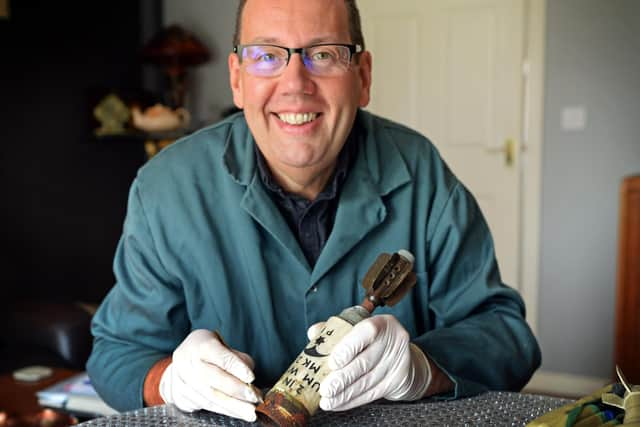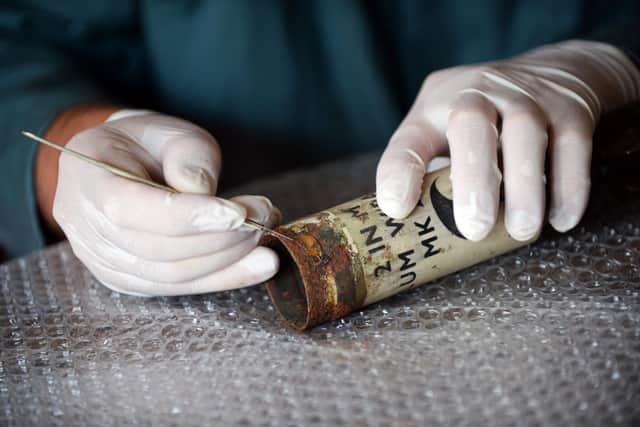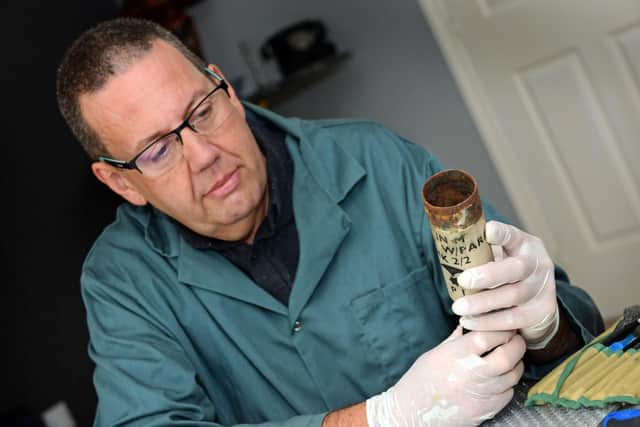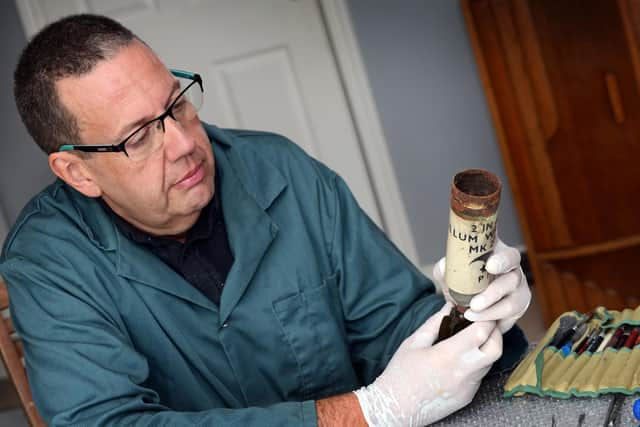Doncaster man preserving history ranging from two headed lambs to Egyptian mummies
and live on Freeview channel 276
Using small hand tools, scalpels and solvents, former electrician Graham Key has spent the last 20 years making sure some of the most priceless collections of historic significance survive in good condition for the future generations, ever since an old chair inspired him to change careers.
Today he is restoring a Georgian sedan chair, from 1791. But Graham worked on building sites before trying his hand at restoring a Victorian chair he received as a gift while unemployed.
Advertisement
Hide AdAdvertisement
Hide AdHe stripped it back and waxed it – and liked it so much he went on a course. When he discovered people did that for a living, he decided that was the job for him.


“I didn’t even know that conservators existed before I want on that course,” he said.
Since then, Graham, from Armthorpe, has been preserving history at locations ranging from Edinburgh Castle to Doncaster’s new museum, where he was involved in conservation work on a large portion of items which will fill the new venue.
He’s not allowed to talk about the new Doncaster museum – but admits he is impressed with it.


Advertisement
Hide AdAdvertisement
Hide AdAfter a year’s access course for people without A Levels, he joined a conservation and restoration course at Lincoln University.
Three years later, he had an internship at National Museums of Scotland in Edinburgh – and was preserving Scotland’s history.
His first job saw him restoring models of farm machinery, damaged by bombs dropped in air raids over the Scottish capital during World War Two.
Soon he was moving up to industrial revolution beam engines and parts from 19th century lighthouses, before moving to Historic Scotland, where he looked after some of Scotland’s most famous landmarks, including Edinburgh Castle and Sterling Castle.


Advertisement
Hide AdAdvertisement
Hide AdEleven years ago, he moved to Doncaster, working for Heritage Doncaster for 10 years, before going freelance 18 months ago.
During that time he has worked on some of the borough’s most historic treasures.
"The oldest item I worked on here I think would have been wrappings from an Egyptian mummy,” he said. “They would have been thousands of years old.
"It is a big responsibilty, and you have to have the confidence to do it. You have to keep assessing what you’re doing all the time. It can be daunting.


Advertisement
Hide AdAdvertisement
Hide Ad"But it is great when you start on something that was in poor condition, and you finish knowing that it has been preserved for the future.
“The most unsual item I’ve worked on in Doncaster was probably a two headed lamb, taxidermy. It was actually made from two lambs, in the same way as people once made mermaids. I think people find it amusing, and it draws a lot of attention.
"But I think my favourite items I’ve worked on in Doncaster was in my old job, when the was an exhibition on rail. It brought a lot of comments from locals who had worked on the railways or the plantworks. Some of the items were all right and went straight in, but some needed work. I love social history. I love it when people see things and say ‘I worked there’.”